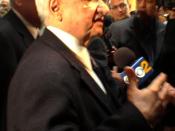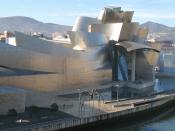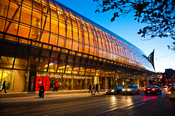Frank Owen Gehry.
Frank O. Gehry, an American architect was born in 1929, Toronto, Ontario. He moved to Los Angeles in 1947. Gehry studied architecture at the University of Southern California. In 1956 he studied at the Harvard School of Design. Gehry designed projects in many countries. His most anticipated building was new museum called The Guggenheim Museum Bilbao in Northern Spain.
While doing this project Gehry was upset with contractors or manufacturers who confirmed that his sculptural shapes could not be build or were not economical. In admitting that their boundaries became his own he started to gain knowledge of Frank Lloyd Wright's theory that an architect has to be a master builder as well. As a result, the building was completed within a reasonable budget, and space. As well, the world's leading architects and architectural critics have already hailed the museum as a profoundly important and visionary building.
In addition, fish and snake forms fascinate Gehry, and he knows how to incorporate these images into his design. In 1990, Gehry said "The fish shape got me into moving freely." The fish image, its form and appearance elevate in drawing after drawing, modifying from an object with iconic character to an innovative material application of a frame linking a shimmering skin. Discovering this theme naturally Gehry accomplished making double curves in buildings. Gehry's approach of visualizing a building through semiautomatic drawings and handmade models is little known; but it gives an instant access into his creative method of architecture. The flow of imagination keeps flowing and encourages Gehry to continuously see things differently. Also, Gehry is well known for his transformation of industrial spaces. For instance, the Los Angeles Museum of Contemporary Art commissioned Gehry to transform 15,400 sq. m of warehouse in the city's Little Tokyo. Furthermore,


